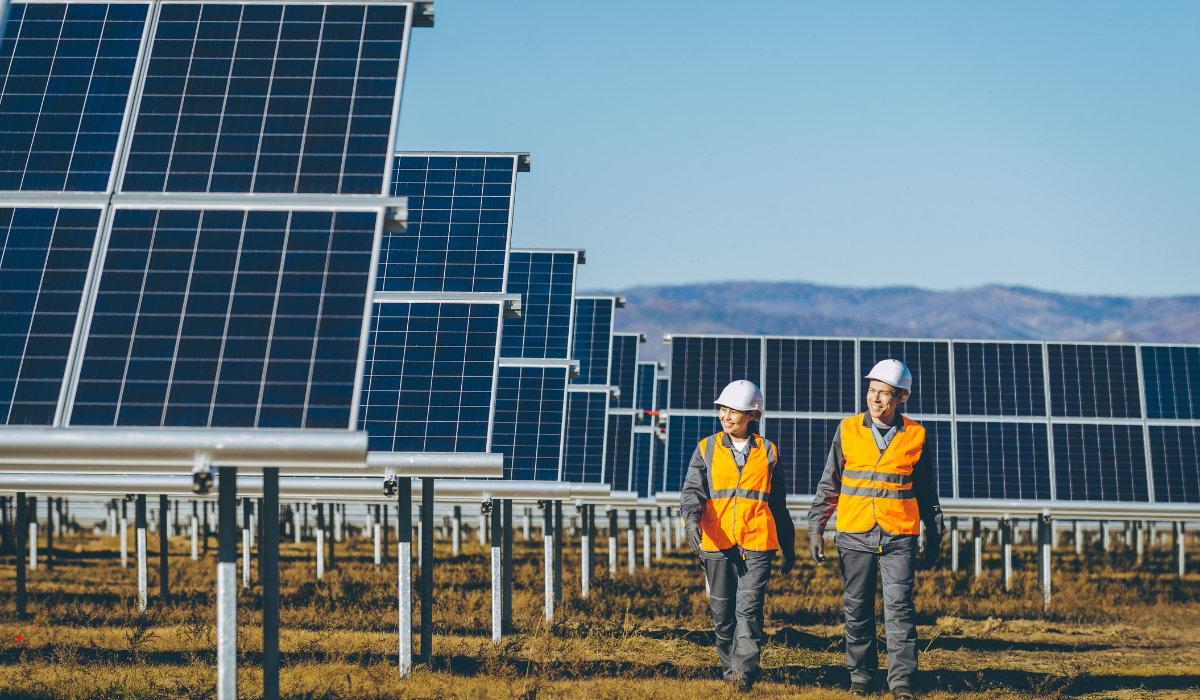Solar panels have transformed how we produce and use energy. From powering small gadgets to entire homes, solar energy is helping the world move towards a cleaner and more sustainable future. But have you ever wondered exactly how these panels work?
In this blog, we’ll break down everything you need to know about how solar panels work, in a simple and easy-to-understand way — from the science behind them to their real-world applications.
What Are Solar Panels?
At their core, solar panels are devices designed to convert sunlight into electricity. They are made up of many smaller units called solar cells (typically made from silicon), and when sunlight hits these cells, a process called the photovoltaic effect takes place, producing an electric current.
That’s why solar panels are sometimes referred to as “PV panels” or “photovoltaic panels.”
Basic Principle: The Photovoltaic Effect
The photovoltaic effect is the foundation of how solar panels generate electricity.
Here’s how it works:
- Sunlight (photons) hits the solar cells.
- The energy from the photons knocks electrons loose from atoms inside the silicon cells.
- These free electrons move through the material, creating an electric current.
- Wires capture this current and feed it into a circuit.
This direct current (DC) electricity can then be used, stored, or converted into alternating current (AC) electricity, which most homes and appliances require.
Step-by-Step: How Solar Panels Work
Let’s look at the complete journey of solar energy:
1. Sunlight Hits the Panel
Solar panels are installed facing the sun at an optimal angle. When sunlight strikes the solar cells, it excites the electrons.
2. Electricity is Created (DC Current)
The excited electrons move around, generating a direct current (DC). This electricity flows in one direction only.
3. Inverter Converts DC to AC
Most homes and businesses use alternating current (AC) electricity.
The solar inverter plays a crucial role by converting DC electricity into AC electricity.
4. Powering Your Home or Business
The AC electricity is now ready to:
- Power your lights, appliances, and devices.
- Charge batteries for backup storage.
- Feed excess power back into the electrical grid (if your system is connected).
What Are Solar Cells Made Of?
Most solar cells are made using silicon, a common and durable material.
There are three main types of solar cells:
| Type | Characteristics |
|---|---|
| Monocrystalline | High efficiency, sleek black color, higher cost. |
| Polycrystalline | Moderate efficiency, blue speckled look, more affordable. |
| Thin-film | Flexible, lightweight, lower efficiency, cheaper. |
Monocrystalline panels are often considered the best choice for maximum performance and space-saving.
Key Components of a Solar Panel System
Besides the panels themselves, a complete rooftop solar system includes:
- Solar Panels: Capture sunlight.
- Inverter: Converts DC to AC.
- Mounting System: Secures the panels on roofs or land.
- Battery (optional): Stores excess electricity for nighttime use.
- Net Meter (for grid-tied systems): Measures how much electricity you consume versus send back to the grid.
How Much Electricity Can a Solar Panel Produce?
The amount of electricity a panel produces depends on several factors:
- Sunlight Intensity: More sunlight = more electricity.
- Panel Efficiency: Modern panels convert around 18%-22% of sunlight into usable electricity.
- Location: Some areas receive more average sunlight (like Rajasthan, Gujarat) than others.
- Panel Angle and Orientation: Proper installation angle improves efficiency.
For example:
- A typical 350-watt solar panel produces about 1.4 to 1.6 kWh per day in good sunlight conditions.
How Long Do Solar Panels Last?
Solar panels are incredibly durable.
- Most come with a 25–30 year warranty.
- Even after 25 years, they often retain around 80–85% of their original efficiency.
Proper cleaning and maintenance can ensure panels stay efficient for decades.
Benefits of Solar Panels
- 🌞 Clean and Renewable Energy: No pollution, no fuel.
- 💸 Savings on Electricity Bills: Reduce or even eliminate your bills.
- 🌍 Environmentally Friendly: Fight climate change by reducing carbon footprint.
- 🏠 Increase Property Value: Solar-equipped homes are more attractive to buyers.
- 🔋 Energy Independence: Store energy in batteries and rely less on the grid.
Common Myths About Solar Panels (Busted!)
- ❌ Myth: Solar panels don’t work on cloudy days.
✅ Fact: Panels still generate electricity, just at a lower rate. - ❌ Myth: Solar panels require constant maintenance.
✅ Fact: Simple cleaning 2–3 times a year is often enough. - ❌ Myth: Solar is too expensive for average people.
✅ Fact: Government subsidies, loans, and falling costs make solar more affordable than ever.
Conclusion
Solar panels work by harnessing the natural energy of the sun and converting it into electricity through the photovoltaic effect. With just sunlight, a few smart components, and a little maintenance, solar panels can power homes, businesses, and even entire cities sustainably.
Understanding how solar panels work can help you appreciate just how powerful and game-changing this technology is. Whether you want to reduce your carbon footprint, cut your electricity costs, or prepare for a greener future — going solar is a smart choice.
The sun is free — so why not use it? 🌞

